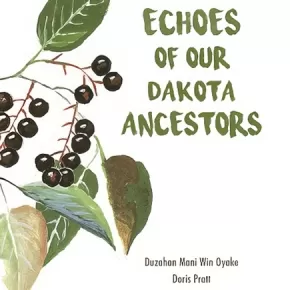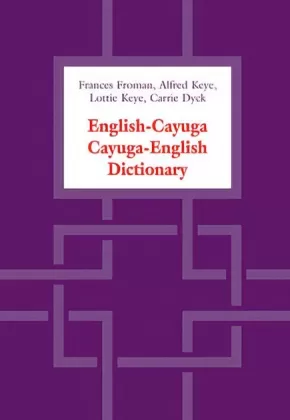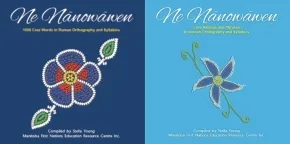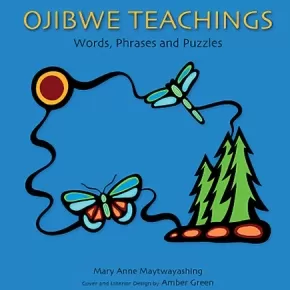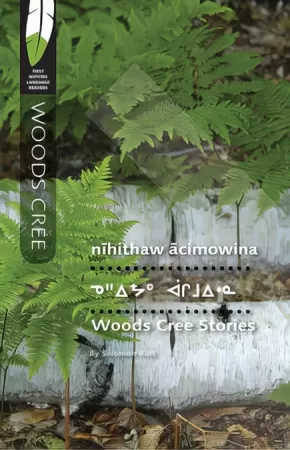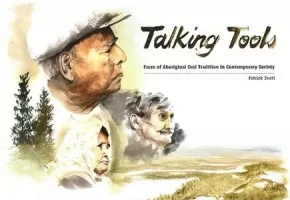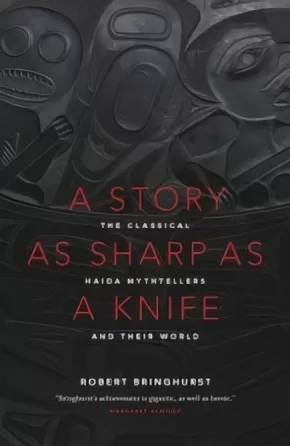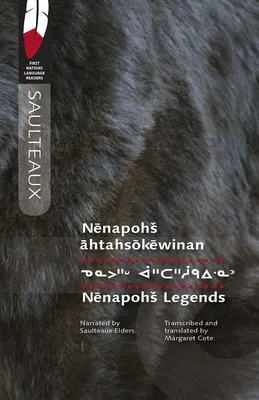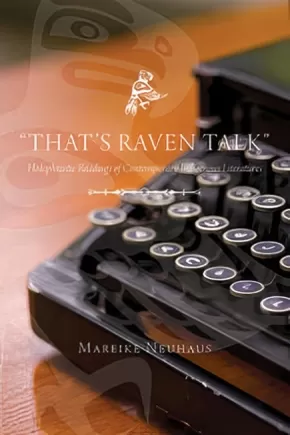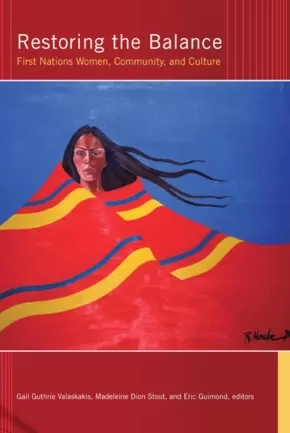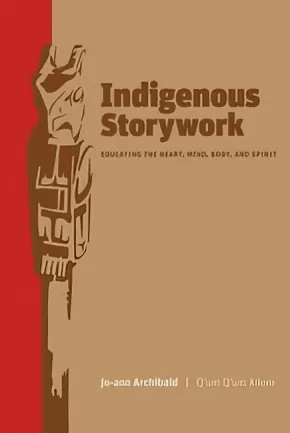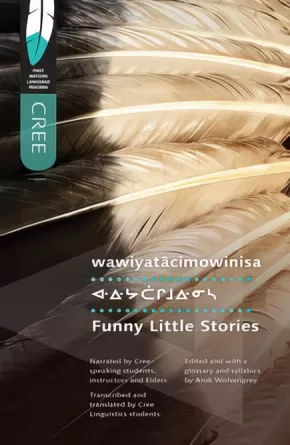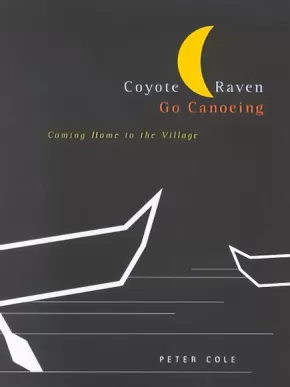Language
Synopsis:
Enjoy imakhmakhap woyakapi (enjoyments that are told) in Dakota. Each chapter in this charmingly illustrated booklet focuses on a month of the year, with stories, poems and songs in the Dakota language. Doris Pratt, a long time language teacher and material developer, shares this Dakota collection to help students learn and practice the language.
Educator Information
This book is written in the Dakota language. It is useful as a total Dakota language program or can be used to supplement any Dakota language course. It is suitable for adult language courses. Included in the appendices are explanations of the Dakota language and a prayer by Hector Bunn.
Synopsis:
The first comprehensive lexicographic work on Cayuga, an Iroquoian language spoken in southern Ontario at Six Nations of the Grand River, this dictionary, combines the work of Dyck, a professor of linguistics, and Froman, Keye, and Keye, all Cayuga language teachers at Six Nations. It contains over 3000 entries, including 1000 verb forms and many nouns never before printed; extensive cross-referencing, thematic appendices that highlight cultural references and provide 1600 further entries, and a short grammatical sketch complete this accomplished work.
Entries in the main dictionary are organized by bases, which will make the dictionary especially helpful to those learning Cayuga as a second language. The dictionary's accuracy and extensiveness will make it an indispensable reference not only to the Cayuga speaker and student, but also to other Iroquoian speakers, linguists, anthropologists, and historians of Indigenous Peoples.
Produced under the auspices of the Sweetgrass First Nations Language Council Inc.
Reviews
"The first extensive dictionary of Cayuga, this benchmark work documents the language in 3,000 entries and in word lists organized thematically in appendixes ... A valuable tool for linguists of Iroquoian languages and anthropologists, as well as those who study the Cayuga language. Summing up: Highly recommended."— R. Hanson, Choice
"A major milestone in Iroquoian studies and an extremely important tool in the preservation of the Cayuga language."— Blair A. Rudes, Department of English, University of North Carolina at Charlotte
Additional Information
786 pages | 6.88" x 9.73" | Paperback
Synopsis:
Set of two language books:
- Cree Sayings and Phrases in Roman Orthography and Syllabics
- 1000 Cree Words in Roman Orthography and Syllabics
Language and cultural retention is a community effort, and Ojibwe Teachings, complied by Mary Anne Maytwayashing, is a resource to help in that effort. If you are new to the language, are in the process of learning, or speak Ojibwe fluently, this booklet is for you. It is through sharing what we know that future generations will have what they need to keep our First Nations languages alive.
Synopsis:
Humour is not only the best medicine; it is also an exceptionally useful teaching tool.
So often, it is through humour that the big lessons in life are learned--about responsibility, honour, hard work, and respect. Cree people are known for their wit, so the tales in Woods Cree Stories are filled with humour. The book includes nine stories--including Boys Get Lost, Foolishness, and Animals Become Friends--and a Woods Cree-to-English glossary.
All the stories are presented in Cree syllabics, Standard Roman Orthography, and English translation and can be enjoyed by those new to the language and more advanced learners.
Educator & Series Information
Woods Cree Stories is part of the First Nations Language Readers series. With a mix of traditional and new stories, each First Nations Language Reader introduces an Indigenous language and demonstrates how each language is used today. The University of Regina Press’s long-term goal is to publish all 60+ Indigenous languages of Canada.
Additional Information
138 pages | 5.50" x 8.50"
Synopsis:
Talking Tools: Faces of Aboriginal Oral Tradition in Contemporary Society explores the power of oral tradition in Aboriginal society as a foundational cultural and linguistic tool. Four distinct elements are examined: the story-keepers; the importance of practice; the emergence of new stories; and the challenges of sustainability. Finally, the emergence of new technologies and their relevance to the sustainability of the tradition and art of storytelling are discussed.
Additional Information
|
Synopsis:
A seminal collection of Haida myths and legends; now in a gorgeous new package.
The linguist and ethnographer John Swanton took dictation from the last great Haida-speaking storytellers, poets and historians from the fall of 1900 through the summer of 1901. Together they created a great treasury of Haida oral literature in written form.
Having worked for many years with these century-old manuscripts, linguist and poet Robert Bringhurst brings both rigorous scholarship and a literary voice to the English translation of John Swanton's careful work. He sets the stories in a rich context that reaches out to dozens of native oral literatures and to myth-telling traditions around the globe.
Attractively redesigned, this collection of First Nations oral literature is an important cultural record for future generations of Haida, scholars and other interested readers. It won the Edward Sapir Prize, awarded by the Society for Linguistic Anthropology, and it was chosen as the Literary Editor's Book of the Year by the Times of London.
Bringhurst brings these works to life in the English language and sets them in a context just as rich as the stories themselves one that reaches out to dozens of Native American oral literatures, and to mythtelling traditions around the world.
Synopsis:
These seven tales are the traditional teaching stories of Nenapohs, the Saulteaux culture hero and trickster. Oral in origin, they have been passed on through generations by the traditional teachers, the Elders.
For the first time, they are published and made available in Nahkawewin or Saulteaux, the westernmost dialect of the Ojibwe language. Each story is illustrated and is presented in both Standard Roman Orthography and syllabics, with English translation. The book also includes a pronunciation guide and a Saulteaux-to-English glossary.
Educator & Series Information
Nenapohs Legends is part of the First Nations Language Readers series. With a mix of traditional and new stories, each First Nations Language Reader introduces an Indigenous language and demonstrates how each language is used today. The University of Regina Press’s long-term goal is to publish all 60+ Indigenous languages of Canada.
Additional Information
112 pages | 5.50" x 8.50" | Narrated by Saulteaux Elders, Transcribed and Translated by Margaret Cote
Synopsis:
“That’s Raven Talk”: Holophrastic Readings of Contemporary Indigenous Literatures is the first comprehensive study of North American Indigenous languages as the basis of textualized orality in Indigenous literatures in English. Drawing on a significant Indigenous language structure—the holophrase (one-word sentence)— Neuhaus proposes “holophrastic reading” as a culturally specific reading strategy for orality in Indigenous writing. In readings of works by Ishmael Alunik (Inuvialuit), Alootook Ipellie (Inuit), Richard Van Camp (Dogrib), Thomas King (Cherokee), and Louise Bernice Halfe (Cree), she demonstrates that (para)holophrases—the various transformations of holophrases into English-language discourse—textualize orality in Indigenous literatures by grounding it in Indigenous linguistic traditions. Neuhaus’s discussion points to the paraholophrase, the functional equivalent of the holophrase, as a central discourse device in Indigenous writing and as a figure of speech in its own right. Building on interdisciplinary research, this groundbreaking study not only links oral strategies in Indigenous writing to Indigenous rhetorical sovereignty, but also points to ancestral language influences and Indigenous rhetoric more generally as areas for future research.
Additional Information
336 pages | 6.00" x 9.00"| Paperback
Synopsis:
First Nations peoples believe the eagle flies with a female wing and a male wing, showing the importance of balance between the feminine and the masculine in all aspects of individual and community experiences. Centuries of colonization, however, have devalued the traditional roles of First Nations women, causing a great gender imbalance that limits the abilities of men, women, and their communities in achieving self-actualization.
Restoring the Balance brings to light the work First Nations women have performed, and continue to perform, in cultural continuity and community development. It illustrates the challenges and successes they have had in the areas of law, politics, education, community healing, language, and art, while suggesting significant options for sustained improvement of individual, family, and community well-being.
Written by fifteen Aboriginal scholars, activists, and community leaders, Restoring the Balance combines life histories and biographical accounts with historical and critical analyses grounded in traditional thought and approaches. It is a powerful and important book.
Additional Information
384 pages | 6.00" x 9.00" | Paperback
Synopsis:
Jo-ann Archibald worked closely with Coast Salish Elders and storytellers, who shared both traditional and personal life-experience stories, in order to develop ways of bringing storytelling into educational contexts. Indigenous Storywork is the result of this research and it demonstrates how stories have the power to educate and heal the heart, mind, body, and spirit. It builds on the seven principles of respect, responsibility, reciprocity, reverence, holism, interrelatedness, and synergy that form a framework for understanding the characteristics of stories, appreciating the process of storytelling, establishing a receptive learning context, and engaging in holistic meaning-making.
Additional Information
192 pages | 6.25" x 9.25"
Synopsis:
This is the first in a series of readers in the First Nations languages of the prairie provinces meant for language learners and language users. The stories in this volume come from a variety of sources, all being narrated or written by fluent speakers of Cree, whether students or instructors of the Cree language or Elders. Funny Little Stories is a collection of nine stories representing the Plains Cree, Woods Cree, and Swampy Cree dialects, with a pronunciation guide and a Cree-to-English glossary.
Students and Elders come together in this volume to offer samples of three distinct genres of Cree storytelling: word play, humorous accounts of life experiences, and traditional stories about Wisahkecahk, the trickster-hero.
Each story is illustrated and is presented in both Standard Roman Orthography and syllabics, with English translation.
Educator & Series Information
Funny Little Stories is part of the First Nations Language Readers series. With a mix of traditional and new stories, each First Nations Language Reader introduces an Indigenous language and demonstrates how each language is used today. The University of Regina Press’s long-term goal is to publish all 60+ Indigenous languages of Canada.
Additional Information
110 pages | 5.50" x 8.50" | Narrated by Cree-speaking students, instructors, and Elders | Transcribed and Translated by Cree Linguistics Students | Edited and with a glossary and syllabics by Arok Wolvengrey
Authenticity Note: Because of the contribution of Indigenous Peoples, such as Cree-speaking Elders, to this work on Cree storytelling, it has received the Authentic Indigenous Text label.
Synopsis:
A lyrical, epic narrative about Aboriginal knowledge and education.
we are narrators narratives voices interlocutors of our own knowings
we can determine for ourselves what our educational needs are
before the coming of churches residential schools prisons
before we knew how we knew we knew
In a gesture toward traditional First Nations orality, Peter Cole blends poetic and dramatic voices with storytelling. A conversation between two tricksters, Coyote and Raven, and the colonized and the colonizers, his narrative takes the form of a canoe journey. Cole draws on traditional Aboriginal knowledge to move away from the western genres that have long contained, shaped, and determined ab/originality. Written in free verse, Coyote and Raven Go Canoeing is meant to be read aloud and breaks new ground by making orality the foundation of its scholarship.
Cole moves beyond the rhetoric and presumption of white academic (de/re)colonizers to aboriginal spaces recreated by aboriginal peoples. Rather than employing the traditional western practice of gathering information about exoticized other, demonized other, contained other, Coyote and Raven Go Canoeing is a celebration of aboriginal thought, spirituality, and practice, a sharing of lived experience as First Peoples.
Reviews
Additional Information
352 pages | 7.00" x 9.50"

